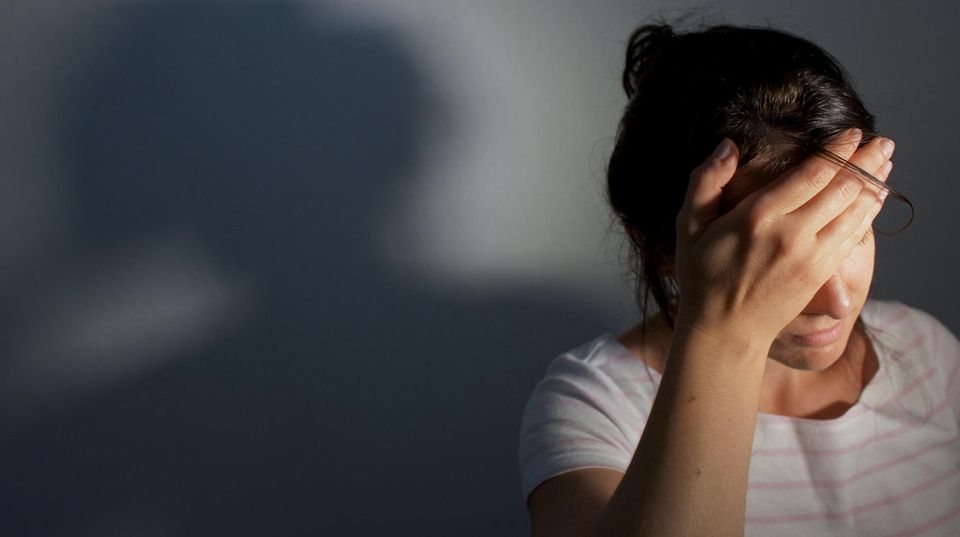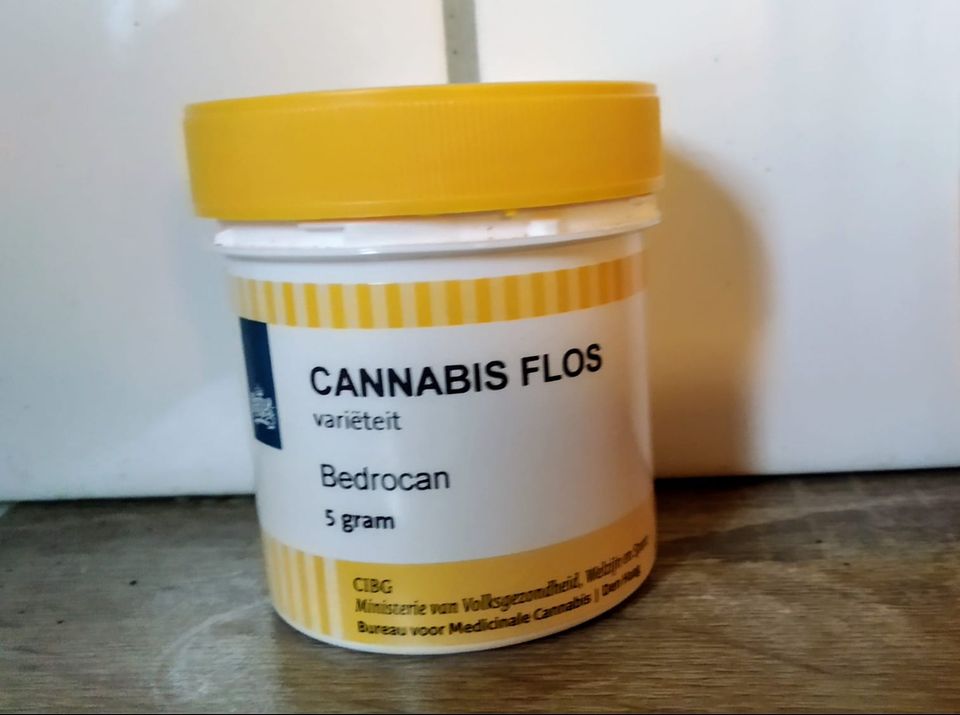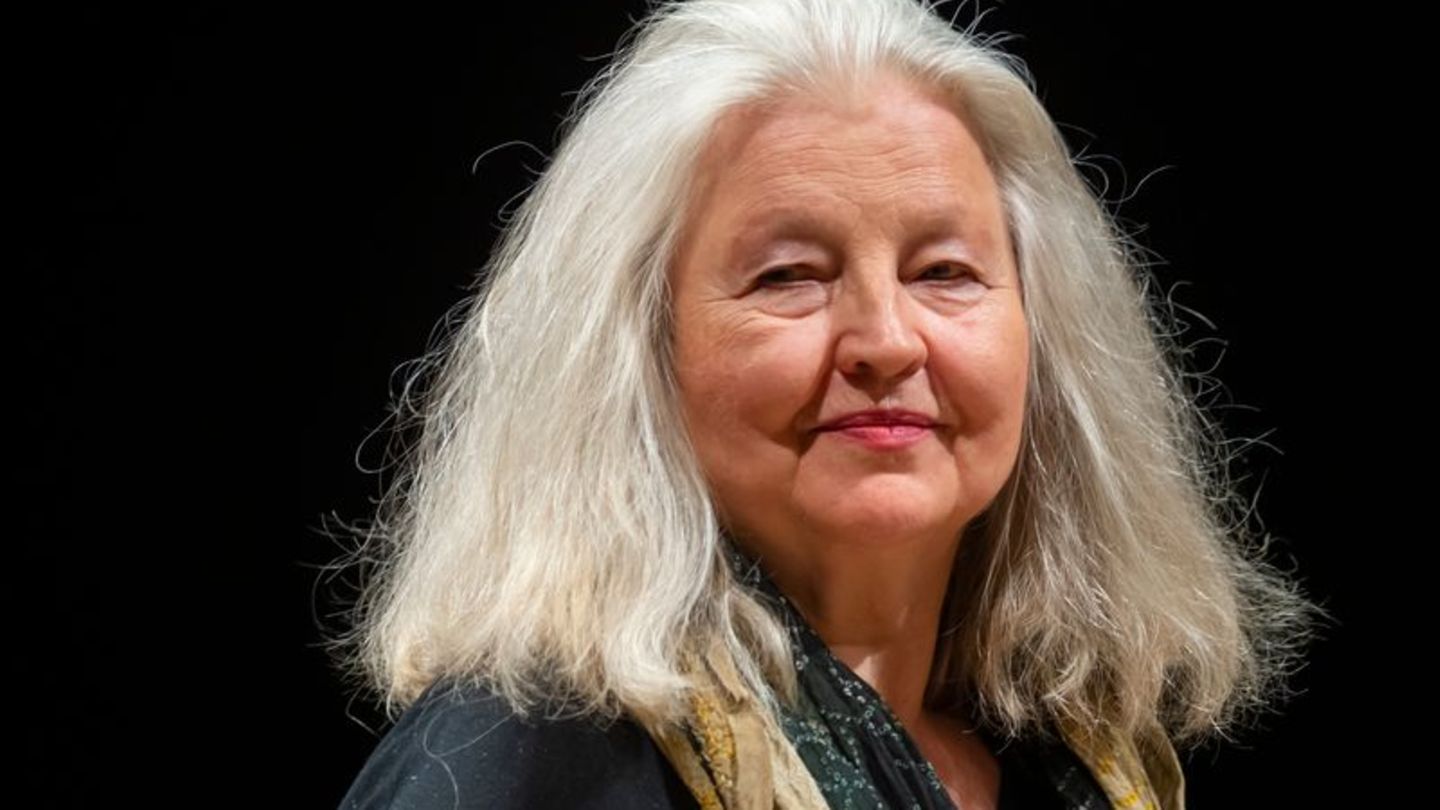Tomke has suffered from excruciating headaches since she was born. Nausea, vomiting and symptoms of paralysis are part of her everyday life. For the 29-year-old migraine sufferer, there is only one way to deal with the illness: smoking weed with a prescription.
Tomke* sits cross-legged on the green couch in her living room. In front of her is a huge bong that is almost as big as her upper body. With practiced movements she lights the water pipe, sucks in the smoke while it bubbles and then inhales it in one go. She tilts her head back, holds her breath for a few seconds and exhales. Tomke smokes weed. The 29-year-old smokes around a gram of cannabis every day. Tomke used to often drive across the Dutch border to buy weed illegally. Her hometown of Emden, a small East Frisian town with around 50,000 inhabitants and best known as the birthplace of Otto Waalkes, is just under an hour’s drive from the nearest Dutch coffee shop. Today, a five-minute walk to the nearest pharmacy is enough. Because: Tomke has been getting her cannabis on prescription for a year, completely legally. You don’t immediately notice it in the happy-looking young woman, but she has been chronically ill since birth and suffers from excruciating headaches. Nausea, vomiting and symptoms of paralysis are also part of her everyday life. Smoking weed is supposed to alleviate their suffering.

Smoking weed on prescription
For more than two and a half years, patients in Germany have been able to obtain medical cannabis with a prescription. According to the German Drug Testing Institute, pharmacies processed around 95,000 prescriptions for preparations containing cannabis and unprocessed flowers in 2018, almost 68,000 more than in the previous year. Tomke receives twelve recipes every year. The reasons for the use of medical marijuana can be very different. It is most often consumed to relieve pain, says Samir Rabbata, press spokesman for the German Medical Association. 69 percent of patients give this reason. According to Rabbata, other reasons for use include spasticity at eleven percent, nausea and vomiting at four percent, depression at three percent, loss of appetite, intestinal diseases, Tourette’s, epilepsy, movement and sleep disorders at one percent.
However, the pain-relieving effects of cannabis are also questioned. Charly Gaul, specialist in neurology and general secretary of the German Migraine and Headache Society, explains that the use of cannabis in headache patients is a rarity. There is no scientifically sound evidence that cannabis use is effective for migraines. The majority of patients discontinue use because of ineffectiveness, he says.
Tomke explains that although the headaches don’t go away, she can sleep better. In addition, she can cope better with the illness, relax and feel less stressed. Cannabis use helps her to accept the migraines. And the US medical journal “The Journal of Pain” reports on a Canadian study from 2019 that shows that cannabis has the potential to reduce headaches and migraines. The short- and long-term effects of marijuana on headaches and migraines were researched. The analysis includes data from 12,293 sessions. The test subjects recorded their state of intoxication using an app. According to the research report, it was found that consuming the flowers reduced the severity of headaches and migraines by around 50 percent. However, it is also noted that effectiveness decreases over time as patients develop a kind of tolerance to the active ingredients.
Excruciating symptoms
However, the pain is only a minor symptom, says Tomke. Nausea and vomiting are also part of her everyday life. Cannabis consumption stimulates their appetite again. With a height of 1.60 meters, she weighs only 44 kilos. Tomke is so thin that her collarbone and ribs are visible under her clothes. When this petite person laughs at the top of his lungs, you almost have the feeling that you are standing next to a Hamburg dock worker, it echoes so loudly through the room.
Shortly after her birth, doctors diagnosed Tomke with migraines. Anguished screams have put her parents and hospital staff on alert. Bright white light, nasty noises and unpleasant smells can trigger migraine attacks. A well-known preliminary symptom is the visual aura, explains Charly Gaul. This manifests itself in a restricted field of vision and flickering. An increasing sensation loss on one side of the leg, arm or face can also be an unpleasant side effect. Occasionally there are also motor weaknesses and difficulty finding words.

Tomke knows all of this only too well. Often it happens at night – a throbbing headache. Then Tomke runs to the toilet, where her stomach says goodbye to dinner. Sometimes she can’t rush to the bathroom because she can’t feel her legs. Unfortunately, Tomke often experiences symptoms of paralysis, she says. She also knows problems with speaking well. “Most people can’t imagine what it means to have a migraine. Life is different. I had to stop three training courses because I had too many absences due to the pain“, she explains, “but smoking weed makes a lot of things more bearable.” There were times when she felt like giving up, she says and pauses for a moment. At the moment she does not have any professional activity. She takes care of the three-room apartment, enjoys golfing, meeting friends and spending a lot of time with her partner. “He also had to get used to the situation,” says Tomke, while she serves East Frisian tea in style. The two have now been a couple for ten years. Smoking weed doesn’t bother him.
Tomke’s “dealer”? A pharmacist
“Insured people with a serious illness are entitled to be supplied with cannabis in the form of dried flowers or extracts,” says Samira Rabbata from the German Medical Association. The prerequisite is that a recognized medical service is not available, that in individual cases there is a well-founded assessment by the treating doctor or that there is a not entirely remote prospect of a noticeable positive effect on the course of the disease or on serious symptoms, he explains. A corresponding application is then forwarded to the health insurance company, which then ultimately decides whether to approve it. A year and a half ago, Tomke finally got the decision: From now on she was officially allowed to smoke weed legally and so her pharmacist became a “dealer”. “At first it was strange to get my weed legally and without an adrenaline rush from a regular pharmacy,” she says with a broad grin. However, it is now completely normal that she is greeted by name as soon as she opens the shop door. Then, after presenting the prescription, she is given her green medicine.

The small white container with the inscription “Cannabis Flos” seems inconspicuous at first glance. Tomke turns the lid off. The dusty-looking, sticky plant spreads its sweet and pungent smell throughout the room. Tomke takes a small portion out of the can and puts it into a handy grinder. She uses it to grind the grass into small pieces, takes it out again and mixes it with some tobacco on a folded piece of paper. Then she stuffs the mixture into the bong bowl and lights it. A scene that she cannot imagine outside her three-room apartment. “Although I’m allowed to, I won’t smoke weed in public. Not even rolled up in a joint,” explains Tomke. “Especially in a small town like Emden, smoking weed is a rare sight for the long-established East Frisians. I just don’t want to upset anyone.”
*Name changed by the editors
Source: Stern
I’m Caroline, a journalist and author for 24 Hours Worlds. I specialize in health-related news and stories, bringing real-world impact to readers across the globe. With my experience in journalism and writing in both print and online formats, I strive to provide reliable information that resonates with audiences from all walks of life.




